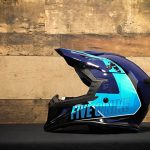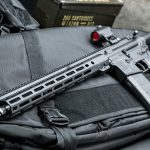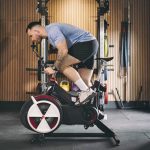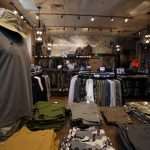While the snow finally started falling in February, it was clearly not enough for snow sports retailers to clear out their hardgoods inventories for the next season. Even with aggressive discounting and promotions, inventory levels at specialty retailers are up considerably nationwide, according to the latest Snow Sports Retail Audit released by SnowSports Industries America. With the eastern alpine and cross-country resorts impacted the most by the lack of snow, it is likely that inventories east of the Mississippi are in even worse condition.
Several ski and snowboard manufacturers are already planning on a 15% to 20% decline in global pre-season orders next year due to these excess reserves, which, absent any disruptive innovations, will be sold next year instead of new product.
According to the monthly SIA report, hardgoods sales through February were down in the double-digits with snowboard equipment sales declining faster than alpine ski. The Nordic categories suffered the most this year due to spring-like conditions persisting through January in many of the core cross-country ski markets. Telemark ski equipment sales also suffered.
Alpine ski equipment did see several categories that outperformed the rest of the market. Sales results in February mirrored much of the earlier season with twin-tip, fat, and mid-fat ski sales leading the way. Also, ski system sales continue to gain even more market share from separate binding & ski sales. This phenomenon has gained enough momentum so that average selling prices for the overall ski category are being artificially inflated by the combined higher price of the ski and binding compared to being sold as a single unit.
Carve ski systems declined to account for only 38% of all ski systems sold. However, mid-fat ski system sales increased over 20% so far for the year, while fat systems nearly doubled. Though carve ski systems were the largest category at retail last year, the consumer clearly wants a bigger, fatter ski. Mid-fat ski systems accounted for 52% of all ski systems sold this year, up from 45% last year. In addition to the fat and mid-fat categories, twin-tips also saw banner sales for the season-to-date and the month of February. For the year, twin-tip sales were up 23% due to more units sold and a double-digit increase in ASPs. For February, sales were up over 80%.
In spite of the success the industry has seen with these categories, ski and ski system inventories are much higher than last year. According to SIA, there were 209,000 pairs of alpine skis still in-stock at retail at the end of February, compared to 156,000 at the same time last year.
While Nordic equipment sales for the month of February were quite strong sales were up 15% in units and 12% in dollars – the category is still suffering season-to-date with Nordic ski sales down 30%, boots down 25%, and bindings down 21%. Telemark equipment sales also suffered with a 31% drop in sales. This slump is most likely due to equipment innovation in the alpine touring market.
Snowboard equipment sales were down in double-digits with nearly every category impacted to some extent. The lone exception was all-mountain boards, which were up 23% in units and 31% in dollars. Overall, board sales were down 12% with double-digit declines in freestyle and freeride sales. Sales of snowboard boots declined 17% due to both lower ASPs and units sold. Binding sales followed the same trend with a 13% decline in sales.
Inventories of snowboard equipment appear to be in slightly better shape than alpine ski equipment. The only exception would be snowboard boots, which had a 57% sell-through at the end of February, compared to 62% sell-through at the same time last year.
Again this month, apparel was the saving grace for snow sports retailers. Overall, the category was up 8% at specialty retail and is out-selling equipment by over $50 million. The primary drivers this year have been insulated parkas, which were up 23% for the season-to-date period, and soft shell tops, which increased 20% in spite of considerably lower ASPs.
Altogether, specialty retailers have been making the best they can of this winter, which has been called the worst winter for snow sports in the past decade. Apparel, accessories and equipment sales at specialty retail combined were down 1% for the season-to-date. Adding Internet sales into the mix, sales increased 6%.
>>> While the lift from Internet sales will likely keep vendors somewhat healthier, the excess inventories sitting on shelves (and by now in back rooms) has already had a major impact on pre-season orders for next season…















